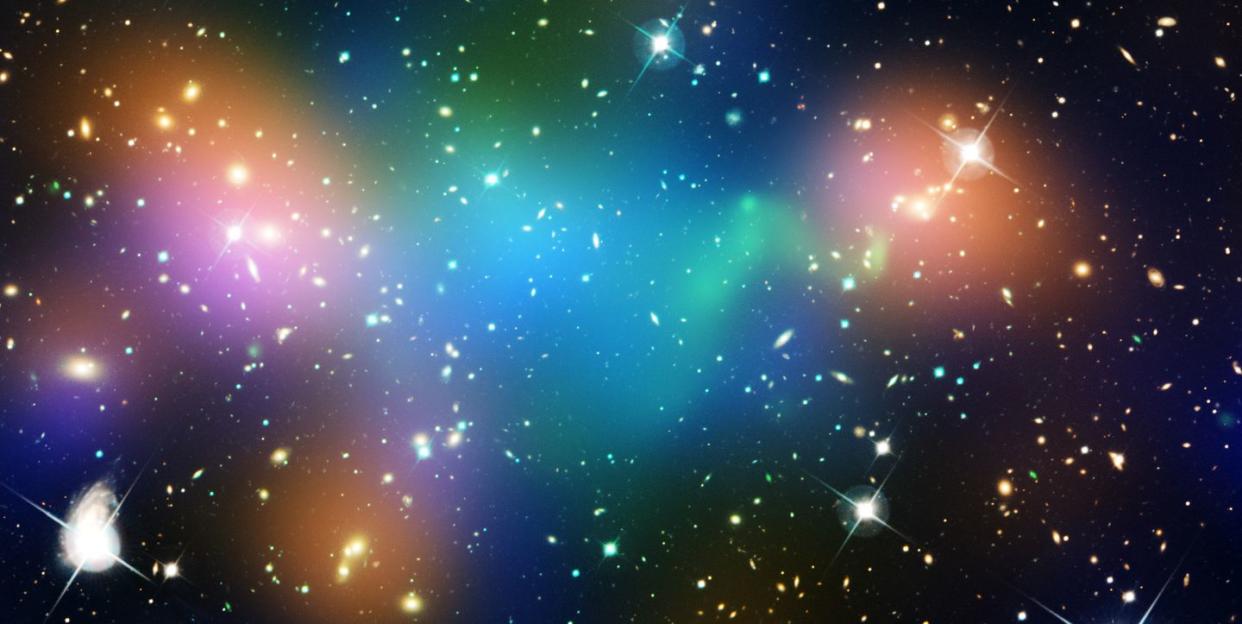We Just Mapped Out Dark Matter With Radiation From the Big Bang

Scientists have created a new map of the dark matter in the universe.
Using radiation left over from the Big Bang, researchers mapped the gravitational effects of the mysterious substance.
The map adds a new data point in favor of the standard model of cosmology to a debate sometimes known as “The Crisis in Cosmology.”
We can’t see dark matter, but we can map it. And according to a recent series of preprint papers, we can map it pretty well.
It might seem a bit counterintuitive, but it’s true. Dark matter got its name because we aren’t able to see it. It doesn’t interact directly with electromagnetic radiation, so the detectors on our telescopes just can’t spot it. But it does interact with gravity, and by using gravity, we can spot where it’s hiding and, potentially, what influence it has on our universe.
To see the effects of the gravity generated by dark matter throughout the universe, cosmologists turned to another elusive area of interest—cosmic microwave background radiation (CMB). The CMB is radiation that permeates the universe, originating from just after the Big Bang.
It’s diffuse, it’s everywhere, and it can be moved around by gravity—a perfect candidate for showing off the power and distribution of dark matter. So, a team of researchers decided to use the Atacama Cosmology Telescope to map the CMB over about a fourth of the sky and see how it’s affected by sources of gravity like dark matter.
“We’ve made a new mass map using distortions of light left over from the Big Bang,” Mathew Madhavacheril, one of the researchers who worked on the project, said in a press release. “Remarkably, it provides measurements that show that both the ‘lumpiness’ of the universe, and the rate at which it is growing after 14 billion years of evolution, are just what you’d expect from our standard model of cosmology based on Einstein’s theory of gravity.”
A confirmation of “lumpiness” doesn’t necessarily sound like a big deal, but it’s actually a significant point in favor of one side of a major cosmological debate. Sometimes called “The Crisis in Cosmology,” it’s a disagreement about how “lumpy”—or unevenly distributed—dark matter should be. According to measurements of dark matter’s distribution taken from starlight instead of CMB, the mystery substance isn’t “lumpy” enough to agree with the standard model of cosmology (ΛCDM). That disagreement would imply that ΛCDM is wrong, and would throw a serious wrench in our understanding of the deep universe.
But according to this most recent CMB-dark matter map, ΛCDM is doing just fine. “While earlier studies pointed to cracks in the standard cosmological model, our findings provide new reassurance that our fundamental theory of the universe holds true,” Frank Qu, a Ph.D. student and one of the researchers on the project, said in a news release.
Suzanne Staggs, another researcher on the project, added in the release that she believes combining the starlight-based calculations with the new map will provide “an extraordinary opportunity to use these different data sets together. Our map includes all of the dark matter, going back to the Big Bang, and the other maps are looking back about 9 billion years, giving us a layer that is much closer to us. We can compare the two to learn about the growth of structures in the universe. I think is going to turn out to be really interesting. That the two approaches are getting different measurements is fascinating.”
In any case, the map is a huge success, marking the beginning of the end of a project about 20 years in the making. The team is now looking forward to seeing what other groups do with their data, and anticipates being able to make even more efficient maps with the upcoming Simons Observatory.
“When we proposed this experiment in 2003, we had no idea the full extent of information that could be extracted from our telescope,” Mark Devlin, another of the researchers on the project, said in a press release. “We owe this to the cleverness of the theorists, the many people who built new instruments to make our telescope more sensitive, and the new analysis techniques our team came up with.”
You Might Also Like
